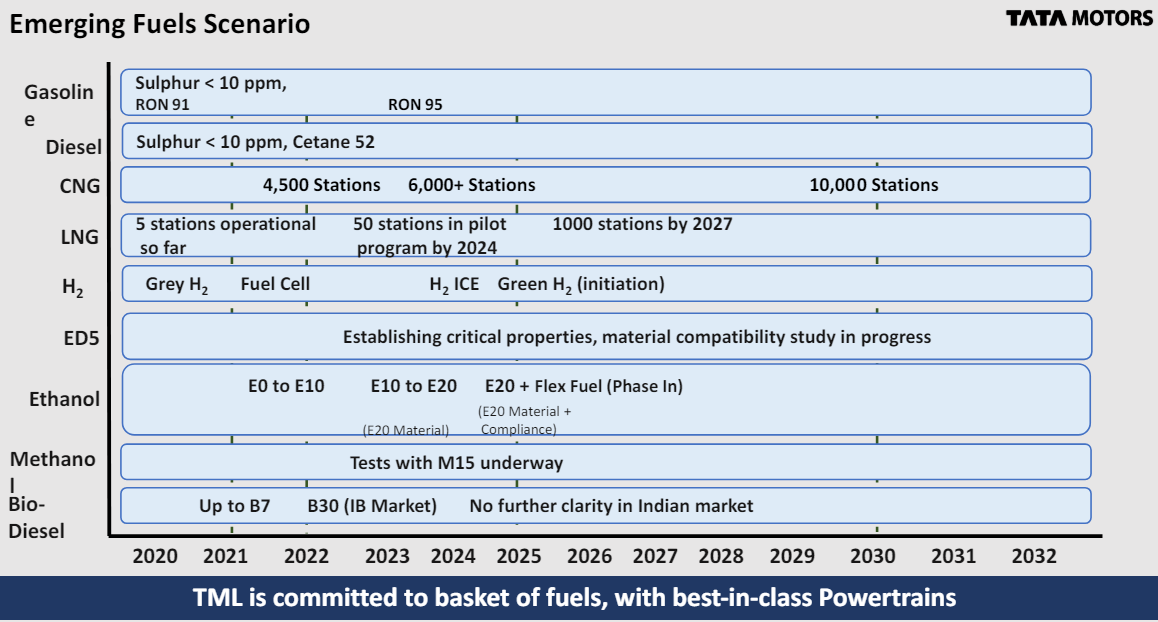Tata Motors, a market leader in the commercial vehicle industry, is taking a multi-pronged approach to powertrains, according to Rajendra Petkar, the company’s CTO, in an investor day presentation.
This comes as the fuel landscape is undergoing a transformation. CNG, for instance, is witnessing a rapid build-out of refuelling infrastructure, with the number of stations projected to jump from around 6,000 at present to over 10,000 by 2030. Tata Motors is ready to capitalise on this trend.

LNG is another area of focus, with over 50 operational stations expected by the year-end. This growth is expected to continue, with more than 1,000 stations expected by 2027, and Tata Motors is ensuring its vehicles are compatible with this future fuel source.
The company is also making inroads into the green hydrogen space, leveraging its expertise in hydrogen-powered internal combustion engines.
For next-generation biofuels like ED-5, Tata Motors is working on figuring out key properties of the fuel and ensuring material compatibility in its vehicles.
In the ethanol segment, the company is setting its sights on the E20 and beyond, targeting to meet material and compliance requirements for flex-fuel vehicles by 2027.
Meanwhile, trials are underway with M15 methanol, another alternative fuel option.
With regards to biodiesel, while Tata Motors offers B30 blends in international markets, the company is awaiting a clearer picture on the regulatory front before offering it domestically.
